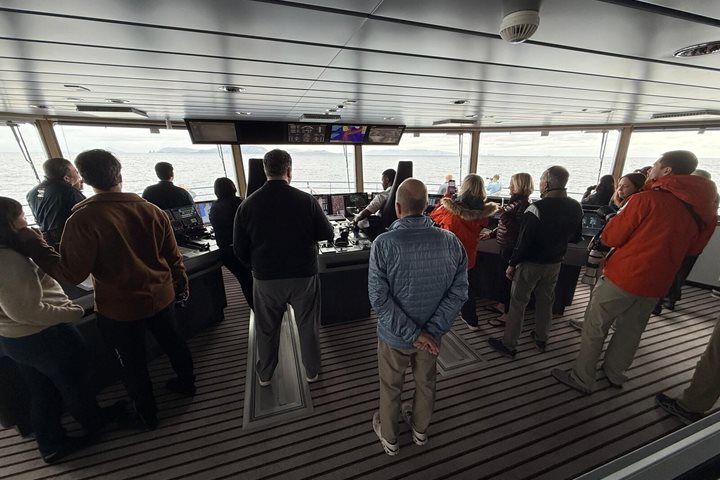The relaxing nature of a day at sea is so often dashed by inclement weather conditions. As it were, the Drake Passage, the area of water betwixt South America and the Antarctic Peninsula, is notorious for just such weather conditions and just such hopes of relaxation being dashed. Fortunately for us all aboard the National Geographic Orion, the Drake Passage was a mild sea at most. We were introduced to the staff and crew, enjoyed lectures on photography, and began to learn about the continent and its conservation. Gentle waves rocked the ship as she steamed south, carrying our expectations and excitement into the eternal daylight.
2/28/2025
Read
National Geographic Resolution
Northbound Drake Passage, Cape Horn, and the Beagle Channel
This morning, we had a later start than usual after a late night enjoying the crew show. Our galley team gifted us with a fulfilling brunch. We then had a brilliant forum about climate change with the participation of our panel of experts onboard. Afterward, our expedition leader called us to the bow to see Cape Horn, which was only a few miles ahead. The good weather allowed us to have a smooth and fast crossing, allowing extra time to swing by Cape Horn, the most southern tip of the Americas. Over the PA system, Steven provided a very interesting description of the historical importance of this area, then Pablo read a beautiful poem, a memorial to the seaman lost at sea. We could see the monument in the distance, two metal sheets that depict an albatross in flight. During the afternoon, we enjoyed Madalena’s presentation about Women in Antarctica. This was an incredible voyage through the struggles and delays of allowing women to participate in science and logistics in Antarctica. We entered the Beagle Channel around 17:00 and we encountered black-browed albatrosses, cormorants, dolphins, and whales. On our final approach to the beautiful city of Ushuaia, we passed by Les Eclaireurs Lighthouse and some of the seals that live in the Bridges Islands Archipelago.







